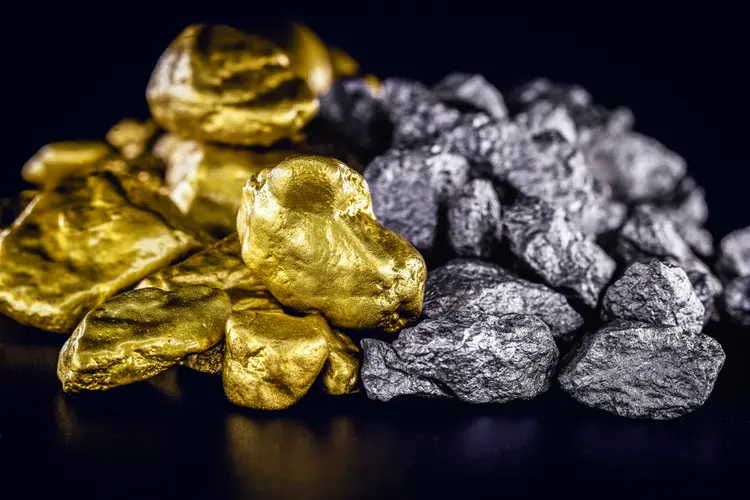What Is Gold Mining, Exactly?
Gold mining refers to the process of extracting gold.
How Is Gold Extracted?
There are four main ways to mine gold. Placer mining, heavy rock mining, residual mining, and gold ore processing are all methods of extracting gold.
The practice of extracting gold from a placer deposit is known as placer mining. Because placer deposits are made up of very loose material, tunneling is problematic, hence the majority of extraction methods rely on water or dredging.
Panning
Gold panning is a process for manually separating gold from other materials. Gold-bearing sand and gravel are placed in large, shallow pans. The pan is dipped in water and shook to separate the gravel gold from the other stuff. Because gold is much heavier than rock, it immediately settles to the bottom of pan.
Panning material is usually taken from stream beds, generally at the stream’s inside turn, or from the stream’s rock shelf, where gold mass permits it to concentrate, forming placer deposits.
Sluicing

Using a sluice box to recover gold from placer deposits has long been a standard practice in prospecting and small-scale mining. A sluice box is essentially a man-made waterway having riffles at the end. The riffles are meant to produce dead zones in order to enable gold to fall out of suspension.
The box is positioned in the stream to channel water flow. A gold-bearing substance is placed on top of the box. The material is transported by current through the volt, where gold and other dense stuff falls behind the riffles. Less dense stuff pours out of the box like tailings
Dredging
Although contemporary methods have mostly superseded this practice, small-scale miners still utilize suction dredges for some dredging. One or two persons are usually required to run small floating machines. A suction dredge is made consisting of a sluice box supported by a pontoon and connected to a suction hose operated by an underwater miners.
In several of the United States’ gold dredging sites, state dredging licenses specify a periodic time limit and area closures to avoid problems between dredgers & fish populations during breeding season. Montana, for example, requires a full licensing system that includes US permits. Engineers, the Montana Department of Environmental Quality, & local county water quality board are all involved.
Rocking chair
It’s also known as a cradle, and it works in the same way as a sluice boxes in a high-walled box, trapping gold using riffles. A rocker box consumes less liquid than a sluice box & is better suited to dry locations. The flow of water required to remove gold in placer materials from gravity is provided by a rocking motion.
Mining on hard rock
Heavy rock gold mining, which accounts for the majority of global gold production, extracts gold from rock rather than from loose silt. Open-pit mining is used at the Fort Knox Mining in Alaska, for instance. Barrick Gold Company operate one of the largest commercial gold mines in North America at its Golds trike mining location in north eastern Nevada.
Other gold miners extract ore from subterranean tunnels or shafts. The largest tropical heavy rock gold mine in the world is in South Africa, at a depth of up to 3,900 m (12,800 feet). The heat is unbearable for humans at such depths, and air conditioning is necessary for worker safety.

